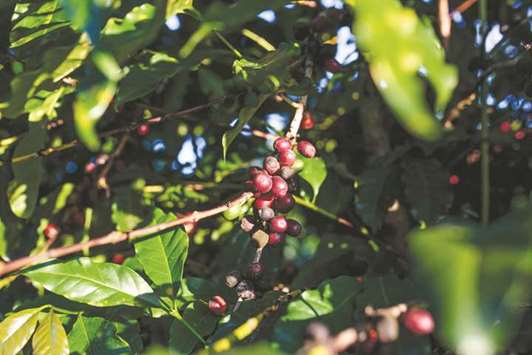Too much rain in Colombia, and too little in Brazil. South American coffee crops are suffering from a confluence of extremes, signalling tighter supplies than expected.
The adverse weather is shaking the confidence of hedge funds, who less than a month ago held a record wager that arabica coffee futures would fall. Instead, prices have posted two straight weekly gains, reaching a two-month high on November 30. The unexpected rebound has forced money managers to back away from their negative bets.
“Given the current fundamentals, the move in arabica is warranted,” said Ben Ross, a New York-based co-portfolio manager of commodity strategy at Cohen & Steers Capital Management, which oversees $61.6bn.
Traders had “gotten too complacent because everybody was expecting the so-called monster crop in Brazil, and many are disregarding we haven’t had perfect weather. Demand has also been decent, especially in emerging markets. People fell in love with the bear market story, and there are cracks in that bear case.”
In the week ended November 28, money managers reduced their net-short positions, or the difference between bets on a price increase and wagers on a decline, to 40,766 futures and options, according to US Commodity Futures Trading Commission data released three days later. That compares with 47,229 a week earlier.
Here’s what traders will be watching:
South American crops: This year’s output will trail forecasts in Colombia, the top arabica producer behind Brazil, after the excessive rains hurt flowering, and it’s unclear how much the deluge will affect the 2018 harvest, according to Roberto Velez, the chief executive officer at the country’s National Federation of Coffee Growers.
Brazil’s 2017-2018 crop came in lower than expected after dry weather damaged plants, according to Ecom Trading, the world’s second-largest coffee trader.
At the same time, an abnormal outbreak of insects spread the coffee-cherry borer disease, reducing bean size and yields, a production drag that may have ramifications into next year’s crop.
Stockpiles: Brazilian production has been sub-par for the past three years as crops struggled to recover from a devastating drought in 2014. With demand robust, global inventories have been shrinking and are forecast to reach the lowest since 2011, according to data from the US Department of Agriculture. That leaves less cushion if South American crops continue to face weather problems.
Emerging deficit: The crop concerns threaten to widen a global production shortfall. London-based Sucden Financial Ltd projects world 2017-2018 output to drop 1.3% from a year earlier to 154.4mn bags, while demand is poised to rise 1.3% to 158mn bags. A bag weighs 60 kilograms (132 pounds). Rabobank International expects a world deficit of 4.7mn bags.
Central America: There’s still time for Brazil’s crops to recover if rains return in coming months. Bountiful harvests for producers in Central America, led by Honduras, can also help make up for South American declines. Ample inventories in importing nations are also still weighing on prices, said Hernando de la Roche, a senior vice president for INTL FCStone in Miami. Futures in New York are down 5.5% this year.
“The market will wait for further clarity about the crop,” De la Roche said. “Rains will be very important in January and February.”

South American coffee crops are suffering from a confluence of extremes, signalling tighter supplies than expected
